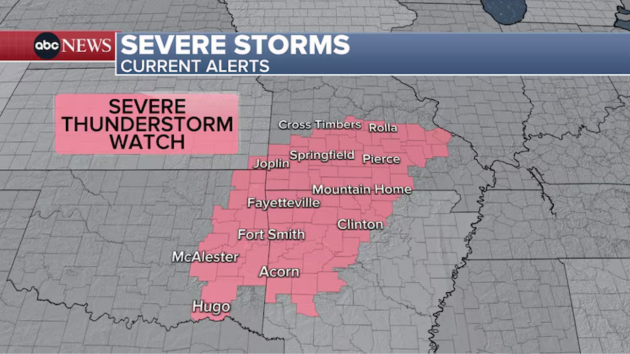
(NEW YORK) — One of the world’s largest digital design platforms, Thingiverse, is taking new steps to block 3D-printed guns and gun parts after investigators in New York discovered an alarming number of design files for 3D-printed weapons available for download.
Thingiverse began deploying automated technology to rapidly detect and remove digital files for 3D-printed firearms.
“Thingiverse is committed to fostering a safe, welcoming, and collaborative environment for its global community. As part of this commitment, we regularly review and update our policies and procedures to help prevent the sharing of unlawful and harmful content, such as weapons and illegal materials, as outlined in our Acceptable Use Policy,” the company said in a statement.
“Following discussions with the Manhattan District Attorney’s Office about concerns around untraceable firearms, we are taking additional steps to improve our content moderation efforts,” they added.
Untraceable ghost guns have become an increasing problem. One hundred and fifty ghost guns were seized in New York City in 2020. The number tripled in 2024.
More recently, the ghost guns have evolved into weapons that can be made with nothing more than a 3D printer and a computer. A user can download a design file for Glock and print it within a few hours, concealed from public view.
Earlier this year, Manhattan District Attorney Alvin Bragg sent letters to 3D printing companies asking them to help combat the spread of homemade guns, which he called a “growing threat.”
Luigi Mangione allegedly used a 3D-printed gun and silencer in the assassination-style killing of United Healthcare chief executive Brian Thompson. Mangione pleaded not guilty to federal charges.
Bragg called on the companies to remove online blueprints, known as CAD files, that can be used to print firearms and gun parts without a background check.
Before an individual can use a 3D printer, they need digital designs for the product they want to manufacture, commonly in the form of “STL”, “3MF”, or “OBJ” files. In the case of Thingiverse, one of the largest platforms in the digital design space, investigators from the district attorney’s office and the NYPD found hundreds of CAD files for 3D-printed weapons, alarming both law enforcement and the company.
As Thingiverse grew, its existing security measures could not keep up with weapons-related CAD files. Its engineers souped them up and a recent test found a significant number of those files no longer available, according to the district attorney’s office.
“Combating the proliferation of 3D-printed weapons remains a top priority for the Office, and I am grateful to Thingiverse for its willingness to collaborate on addressing this urgent issue,” Bragg said. “It’s good faith efforts to stop the spread of 3D-printed weapons into our communities should serve as a model for other 3D printing and digital design companies.”
This week, Bragg sent a similar letter to Bambu Lab, a China-based manufacturer of 3D printers.
“The risk your product creates, as 3D printers are used more and more frequently in schools and homes, is unacceptable,” Bragg wrote in the letter, a copy of which was obtained by ABC News.
He called on Bambu Lab to adopt a security measure used by a different company that checks print jobs against a database of gun blueprints and uses AI to attempt to recognize the shapes of common gun parts.
When a user opts into this program, it blocks prints of detected firearms.
“In order to protect your customers and our residents, and to provide additional roadblocks in the acquisition of illicit firearms, I urge that you implement similar security features as a default standard for all users of your product,” the DA wrote.
“Additionally, it is paramount that you explicitly ban the creation of illegal weapons in your company’s user agreement, as your user’s agreement makes no mention of rules regarding the use of Bambu technology for weapons acquisition.”
The district attorney’s office conceded the measure will not stop the proliferation of ghost guns, but the goal is to make it harder for people to find the designs to create them.
Copyright © 2025, ABC Audio. All rights reserved.
- Central US states under severe thunderstorm watch - October 18, 2025
- Mount Kilauea’s latest eruption on Hawaii’s Big Island seen in new images - October 18, 2025
- Winter 2025 forecast: What to expect based on where you live in the US - October 18, 2025











